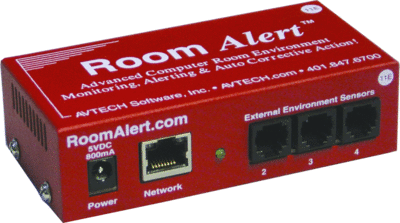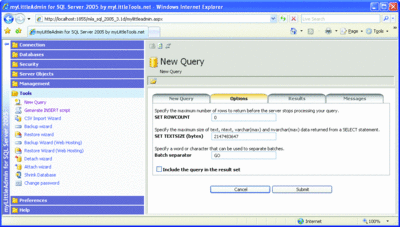ToolboxNew Products for IT Pros
Greg Steen
Create Data-Driven Gadgets
PowerGadgets
As the saying goes, "a picture is worth a thousand words." After using PowerGadgets, a data-visualization tool for Windows PowerShell™, I couldn’t agree more. The PowerGadgets utility lets you easily create your own customized visualizations of data, or gadgets as they’re called. While you may be familiar with the gadgets in the Windows Vista™ Sidebar, don’t assume PowerGadgets is limited to Windows Vista. You can use PowerGadgets in Windows® XP, Windows Server® 2003 and even Windows Server, code-named "Longhorn." The gadgets you create are customized charts, gauges, and maps that can display data derived from Windows PowerShell, an OLE DB data provider, a text file, or a Web service.
You can instantiate a gadget via the Windows PowerShell command prompt or a script, by double-clicking a saved Gadget file, or by using the PowerGadgets Creator tool. PowerGadgets gives you three cmdlets that you can pipe data to: out-chart (which plots series data as one of more than 60 chart types), out-gauge (which displays single data points as either a radial gauge, linear gauge, or digital panel), and out-map (which lets you display data on a geographical map or other vector image).

PowerGadgets helps you turn data into eye-popping charts, gauges, and maps(Click the image for a larger view)
The PowerGadgets Creator tool provides a GUI approach to defining the appearance, axes, data source, display type, and other attributes. All of this can also be done from your PowerGadgets-enabled Windows PowerShell command prompt. If you are using the Windows Vista Sidebar, adding a new visualization is as easy clicking the plus sign at the top or adding the -sidebar parameter to your command-line instantiation of the gadget.
So what could you really use these tools for? Hundreds of options come to mind. Since the tools can query Web services, you could monitor your HR department’s data, getting automatic notification on your desktop when a new employee is hired. Using the Windows PowerShell scripts, you could access Windows Management Instrumentation (WMI) and get processor utilization averages for all your Web servers in the production environment from a single management host.
If you need to look at historical data, simply import a CSV file and dump it out to a map graphic to see, for example, which remote office is using the most bandwidth. And if the bigwigs upstairs need some reassurance that everything is status quo on the Ops team, you can set up a script that will automatically e-mail an eye-popping chart of bandwidth and uptime statistics every morning.
Price: Starts at $299 for one Creator Tool license, or $599 for one Creator Tool license plus 10 client licenses.
Monitor the Environment
RoomAlert 11E
A good host-monitoring solution is critical to your infrastructure, but that’s not the only type of monitoring you need. The physical environment surrounding that infrastructure is also essential. You should be monitoring for airflow, temperatures, humidity, flooding, smoke, and power issues. If you host your infrastructure at a co-location facility, this is taken care of by the facility. But if you have your own datacenters, cages, and server closets, take a look at AVTech’s RoomAlert 11E.

RoomAlert 11E monitors your environment(Click the image for a larger view)
Out of the box, the product includes one temperature/humidity sensor, one digital temperature sensor, and one external power sensor along with the actual hardware device. The unit can accommodate up to eight switch-type sensors and three digital temperature/humidity sensors or expansion boxes. The three digital sensors can be placed up to about 100 feet from the device, while the switch sensors can be hundreds of feet from the device depending on the monitor used.
The device is a self-contained unit with a built-in Web-accessible administration interface. It has no external system requirements other than a Windows machine to install the device discovery software on. Simply plug in the sensors, connect the device to your network, run the device discovery tool, and configure your alerts through the Web-based interface. It’s a good idea to also update to the latest firmware before getting started.
The most important aspect of the installation is planning which elements of your environment you need to monitor and deciding the best placement for the sensors and RoomAlert device. Remember that if you are monitoring a power circuit, your RoomAlert 11E should be on an alternate circuit or UPS. Otherwise, you will be defeating the purpose of the monitor.
AVTech also has a wireless version, the RoomAlert 26W, which offers more freedom as to where you place your central monitoring station in relation to your sensors. It also relieves you of running cables between your cabinets and sensors.
You might want to watch additional environmental factors besides the ones you can monitor with the included sensors, and the AVTech product Web site offers a number of other sensors you can plug into the 11E. You can purchase sensors to track temperature, humidity, and power as well as to check for area and spot flooding, smoke, motion, airflow, and room entry.
Price: RoomAlert 11E starts at $495. Sensors run from $25 to $400.
Book Review
Inside SQL Server 2005 Tools
SQL Server™ 2005 offers numerous new features and tools— so many that it can seem a bit overwhelming. Several members of the SQL Server team at Microsoft have written a good book to get you quickly up to speed on all the new features and tools. More than just a primer, though, this book also serves as a handy reference for someone who already feels fairly comfortable with SQL Server 2005.
Inside SQL Server 2005 Tools (Addison-Wesley Professional, 2006) covers the entire toolset of SQL Server 2005, from the SQL Server Surface Area Configuration Tool to the SQL Server Management Objects (SMO) .NET API that replaces the old SQL-DMO. It starts out with a brief history of the SQL Server product line, followed by a breakdown of the components of the SQL Server 2005 release. It then gives a quick overview of each of the tools available for the release, categorized by operational usage: Installation and Upgrade Tools; Configuration Tools; Management and Administration Tools; Monitoring and Operations Tools; Database, Schema, and Report Design Tools; Development Tools; Query Tuning and Optimization Tools; Maintenance Tools; and finally Programming Object Models. Each tool is then examined in detail.
The book covers a lot of ground, so I’ll only touch on some of the high spots. The sections on installation and configuration will be extremely handy if you’re just getting started with SQL Server 2005. The book does a good job of highlighting the issues you may encounter when trying to upgrade your database and how to use the Upgrade Advisor tool to generate a report of possible conflicts you’ll need to address before starting the upgrade process. It provides a step-by-step guide through the installation process and a description of common configuration scenarios. Especially useful is the part on how to use the Surface Area Configuration Tool to lock down your installation to only essential services and protocols.
In addition, there is good information on SQL Management Studio, the greatly enhanced replacement tool for Query Analyzer, Enterprise Manager, and Analysis Manager. The book provides an in-depth tutorial on the tool’s GUI and details the new UI functionality. For example, you’ll see just how easy it has become to script multiple objects to a new query window. And I quite like the section that covers how to use the SQL Profiler, Activity Monitor, and Microsoft Operations Manager (MOM) to find bottlenecks, note usage patterns, and get alerts on any issues with your database instance.
Anyone working with SQL Server 2005—or thinking about upgrading—should give this book a close read.
Price: $59.99 List. $53.99 Direct.
Web-Based Management
myLittleAdmin for SQL Server 2005
I like having at my disposal Web-based administration of SQL Server 2005 instances. If you are a Web hosting provider, this type of tool can be an essential offering for your customers. One solution worth considering is myLittleAdmin for SQL Server 2005, from myLittleTools.
A Microsoft® .NET Framework-based Web app, myLittleAdmin is easy to install and configure. It has a skinnable interface so you can adapt it to the look of your existing tools, as well as support for multiple languages for global customers.

myLittleAdmin features a skinnable interface(Click the image for a larger view)
The Web-based UI supports most database operations, including creating new databases, managing existing databases and their contents, and working with snapshots and schemas. Editing the properties of existing database objects is simple and myLittleAdmin has a nice editable data grid for modifying individual rows in your tables. The tree view interface is very similar to the tree view found in SQL Server Management Studio, so the application requires little learning. The only hitch is that some familiar right-clicks won’t pull up the expected context menu.
You can also use myLittleAdmin to edit the logins, server roles, and credentials of your SQL instance. It even lets you create and edit backup devices and linked servers—useful tasks to be able to perform from a remote location.
myLittleAdmin also lets you perform tasks like ad-hoc querying, attaching and detaching databases, backing up and restoring, importing CSV data, and shrinking databases. You can even browse to the error log and activity monitor to perform troubleshooting.
Price: Starts at $590 for a single server license. As part of your Web hosting toolset for customers, starts at $990 for a single server license.
Greg Steen is a technology professional, entrepreneur, and enthusiast. He is always on the hunt for new tools and methods to help make operations and development easier for IT professionals.
© 2008 Microsoft Corporation and CMP Media, LLC. All rights reserved; reproduction in part or in whole without permission is prohibited.